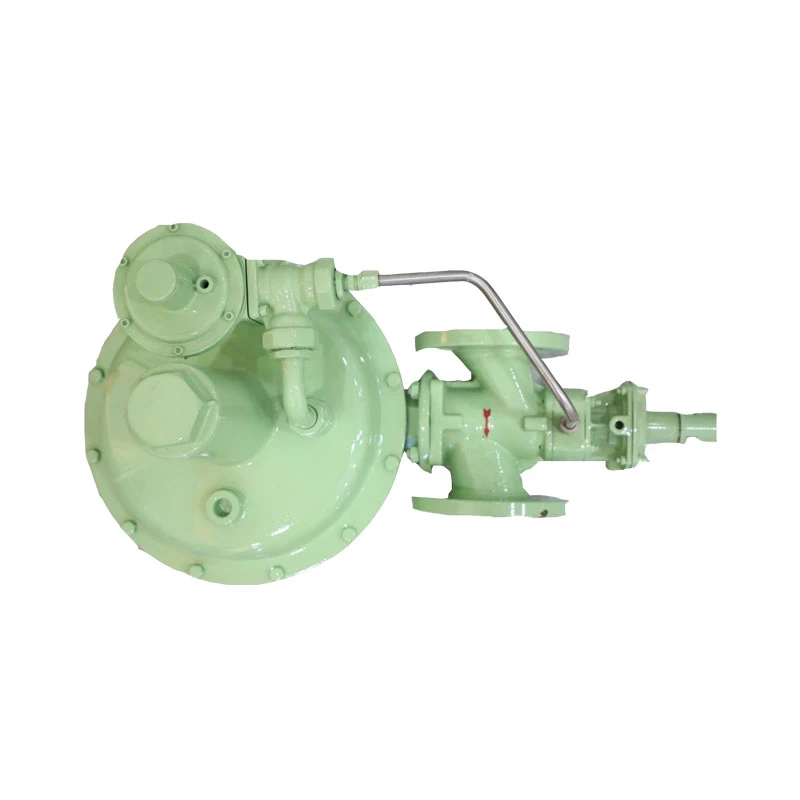
10 月 . 21, 2024 16:13
Back to list
Understanding the Functionality and Applications of Pneumatic Valves in Industrial Automation
Understanding Pneumatic Valves A Key Component in Modern Automation
Pneumatic valves play a crucial role in various industries, utilizing compressed air to control the flow and pressure of fluids. As a fundamental component of pneumatic systems, these valves are integral to automation processes in manufacturing, packaging, and assembly operations. In this article, we will delve into the types, functions, and applications of pneumatic valves, highlighting their significance in modern industry.
What is a Pneumatic Valve?
A pneumatic valve is a device that regulates the flow of compressed air or gas in pneumatic systems. By modulating the air pressure and direction, these valves enable the control of actuators, which can be cylinders or motors, facilitating movement and operation of machinery. Pneumatic valves are essential for ensuring the efficient functioning of various automated processes, making them indispensable in modern manufacturing environments.
Types of Pneumatic Valves
Pneumatic valves come in various types, each serving specific applications and functionalities. The most common types include
1. Directional Control Valves These valves control the direction of airflow within the system. They are available in several configurations, such as 2-way, 3-way, and 4-way valves. A 3-way valve, for instance, can either supply air to an actuator or exhaust it, while a 4-way valve is crucial for extending and retracting double-acting cylinders.
2. Pressure Relief Valves These ensure that the pressure within the system does not exceed predetermined levels, protecting equipment from potential damage. They automatically vent excess pressure, maintaining a safe and efficient operating environment.
3. Flow Control Valves These valves regulate the rate of airflow to an actuator, providing control over the speed of operation. By adjusting the flow, these valves can optimize the performance of pneumatic systems based on specific requirements.
4. Solenoid Valves These are electrically operated valves that enable remote control of pneumatic systems. Solenoid valves enhance automation by allowing operators to control multiple valves through a central command, improving efficiency and flexibility.
5. Check Valves These valves prevent backflow in pneumatic systems. They allow flow in one direction and automatically close to prevent reverse flow, ensuring system reliability.
Functions of Pneumatic Valves
pneumatic valve

The primary function of pneumatic valves is to control airflow, which directly impacts the operation of pneumatic cylinders and actuators. By regulating the flow and pressure of air, these valves enable a wide range of functions, including
- Actuator Control Pneumatic valves determine the precise motion and positioning of actuators. This is critical in applications such as robotic arms, conveyor systems, and automated assembly lines.
- Process Automation In manufacturing processes, pneumatic valves facilitate the automation of repetitive tasks, which enhances efficiency and reduces the need for manual labor
. This not only speeds up production but also improves product consistency and quality.- Safety Measures Through pressure relief and check valves, pneumatic systems are equipped with safety mechanisms that protect against overpressure and ensure proper flow direction, minimizing the risk of equipment failure.
Applications of Pneumatic Valves
Pneumatic valves are widely used across various industries, including
- Manufacturing and Assembly In production lines, pneumatic valves are used for driving tools, moving parts, and controlling assembly operations. Their quick response and reliability make them ideal for high-speed applications.
- Packaging Pneumatic valves control filling, sealing, and labeling machines, ensuring that packaging processes operate smoothly and efficiently.
- Automotive In the automotive industry, pneumatic systems powered by valves are used in paint spraying, material handling, and automated assembly of vehicle components.
- Food and Beverage Hygiene and reliability are paramount in the food industry, and pneumatic valves facilitate safe transport and processing of food products.
Conclusion
Pneumatic valves are indispensable components in the realm of automation and control. Their ability to regulate airflow, maintain safety, and enhance efficiency makes them vital in various industrial applications. As technology continues to advance, the role of pneumatic valves in improving production processes and enabling automation will only grow, reinforcing their importance in shaping the future of modern industry. Understanding their functionality and applications is essential for anyone interested in the field of automation and engineering.
Latest news
-
Unlocking The Quality Gas Pressure ReducersNewsNov.01,2024
-
The Role of Gas Pressure Reducing StationsNewsNov.01,2024
-
The Importance and Functionality of Safety Relief ValvesNewsNov.01,2024
-
The Essential Role of Safety Valves in Natural Gas ApplicationsNewsNov.01,2024
-
The Essential Role of Gas Pressure RegulatorsNewsNov.01,2024
-
Enhance Your Premium Gas FiltersNewsNov.01,2024

